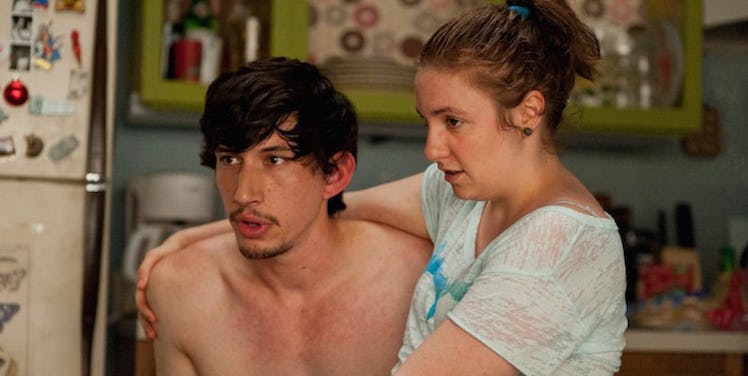
Why More Women Should Give A Damn About Gender Inequality In Film
Ava DuVernay proved black women really do rock when she became the first black female director to ever be nominated for an Academy Award for Best Picture.
Despite "Selma" losing to "Birdman," DuVernay’s nomination is still incredible, considering the fact that, in the Oscar’s 87 years, only nine other female-directed films have ever been nominated for the award, and only one has ever won.
Dubbing The Oscars a sexist awards show would be easy, especially since 77 percent of its voters are male, but the real root of the problem is the film industry itself.
While it may be comforting to think Kathryn Bigelow’s win and Ava DuVernay’s nomination mark the start of progressive achievements for women everywhere, think again.
Just this past year, only six women directed a major motion picture, compared to 124 men. That’s 4.6 percent, which is down from 8.1 percent in 2010. Women aren’t being employed for major crew positions, and the numbers are declining rather than improving.
In 2012, only 10 percent of the films produced employed more than five women, yet women bought half of the movie tickets sold that year. If both men and women are paying to see these films, why are they not both producing them?
Furthermore, if men are able to participate in the choices being made about how they are perceived on screen, why aren’t women?
If you were to jot down every movie you could think of in which the protagonist is a woman, chances are that you’d find most of those movies are “rom-coms” and “chick flicks.” A desperate search for love either consumes the entire movie or greatly encompasses it.
Then, there are those rare gems with a strong female lead (although she is usually placed in a supporting role). She calls all the shots, stands her ground and demands respect.
Men may even report to her. These characters give feminists hope, and they make us believe the media is finally giving women positive recognition.
But if we look closer, we will find most of these empowering females are either ridiculously beautiful and constantly sought after, or they are malevolent and crass.
They’re exaggeratedly liberated, or they're unhappy and lonely. When they’re not dominating the workforce, they can be found complaining about their love lives.
Actress Rashida Jones worded it perfectly:
"It’s like every woman in a movie has to be perfectly adorable, and her life is a mess… and only when a man comes in does everything really fall into place."
I believe this occurs as a result of how many men perceive strong women. The writers likely aren’t too romantically fond of women in high power positions, and they think most men probably aren’t, either. So, they subconsciously write these beliefs into their female characters.
You’ll hardly ever find a female protagonist who is both in charge of her work life and fully satisfied with her home life.
Male writers also have a hard time creating respectable super heroines. Aside from the fact they primarily function as “merely extensions of their male counterparts,” a majority of super-heroines are flaunted as sex symbols.
It’s highly unlikely, for instance, that your son will grow up having a favorite superhero who's also a woman. The characters usually just end up being sexualized figures men fanaticize about.
Chick flicks are designed to target female audiences, yet somehow the main characters always end up being written and cast in a way that appeals to male viewers.
Most men aren’t even paying to see these chick flicks, yet the takeaway always seem to be that a woman can get anything she wants, as long as she’s pretty.
It's rare to find novel series that were written by women ("Harry Potter" and "The Hunger Games") adapted into feature films that were also directed by women.
And most movies you would think women directed, such as, "Sex and the City," "Mean Girls" and "Legally Blonde," were — you guessed it — directed by men. But even the latter movies are scarce. Only 15 percent of all protagonists in the 100 highest-grossing films were female in 2013.
In addition, women are more than three times as likely to be wearing sexually revealing clothes in a movie, with only about 30 percent of all speaking roles being devoted to them.
Because men have zero awareness of the complexities of being a woman, it can explain why women are religiously depicted as superficial sex objects to be seen and not heard on-screen.
Perhaps the biggest issue with the underwhelming misrepresentation of women in film is how it translates to its younger audience. Girls emulate what they see in the media, and take heed to what it tells them is important about themselves.
How can girls view themselves as multiplex and brilliant, if films are not showing them in that light? If more female actors were cast as political figures and CEOs, perhaps more girls would know it’s possible for them.
Young girls deserve proper role models, men deserve a better understanding of the other sex, and women deserve to have a voice in one of America’s greatest pastimes.
Hollywood’s indifference to its female audience rears its ugly head in the movies we watch each year. Women continue to fund a multi-billion dollar industry that consistently turns its back on them.
It’ll be a long time before the film industry is a level playing field, and it will require more women to seek directing and screenwriting positions. Luckily, since movies are less gender biased when a woman is in charge, their employment can mean even better movies.
In the meantime, there are ways you can support films directed by women like Bigelow and DuVernay. If we can’t all break down the barriers of Hollywood, we should at least support the women who will.